Narrative literacy for science communication
Bill Dennison ·I recently wrote a blog entitled 'Practical visual literacy for science communication', and since narratives and visuals need to be combined for effective science communication, I felt that developing a narrative literacy was also important. The first three narrative literacy principles are derived from Randy Olson's excellent book "Houston, We Have a Narrative", discussed in a previous blog. The fourth, fifth and sixth principles are from our Integration and Application Network books on science communication; "Integrating and Applying Science: A Practical Handbook for Effective Coastal Ecosystem Assessment" and "Communicating Science Effectively: A Practical Handbook for Integrating Visual Elements". The seventh principle is from a paper by M. Dahlstrom "Using narratives and storytelling to communicate science with nonexpert audiences", published in the Proceedings of the National Academy of Sciences. The narrative literacy principles are the following:
- Storytelling can be a powerful tool for science communication (using causality, temporality and character).
- Selection of key words can enhance science communication.
- The ABT format (" . . . and . . . but . . . therefore . . ." template) provides compelling narrative structure.
- Active titles enhance comprehension.
- Simplify and define terms, avoid jargon but do NOT 'dumb it down' -- instead, 'raise the bar'.
- Provide context; 'why should the audience care?'.
- Science narratives should focus on informing, not persuading the audience.
Storytelling can be a powerful tool for science communication (using causality, temporality and character).
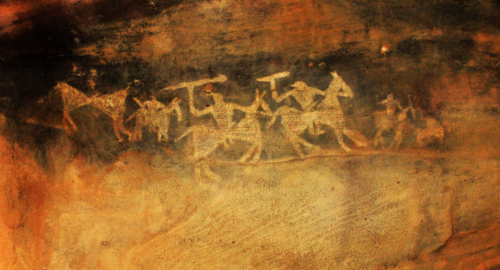
Storytelling is an ancient form of human communication. People have gathered around campfires and in caves since the early evolution of humans. They would regale each other with stories, and in many cultures, these stories are what constitute their shared oral history. Stories are both easier to recall and easier to remember than facts alone, so storytelling is an effective way to communicate important aspects of culture. According to Dahlstrom, the elements of good storytelling that are important are the following: causality (relating cause-effect relationships), temporality (a beginning, middle and end) and character (telling the story in terms of people). The aboriginal Australians have an oral tradition known as songlines, which are stories that are sung to each other to provide a geographical orientation across the landscape. These songlines are important for a nomadic culture adapted to variable rainfall landscapes who cannot lug around books and paper, thus need to retain information in their memories and communicate it orally.
Selection of key words can enhance science communication.
Randy Olson has a term he coined the Dobzhansky template. This template is the following: "Nothing in the ________________ makes sense, except in light of _________________ ."
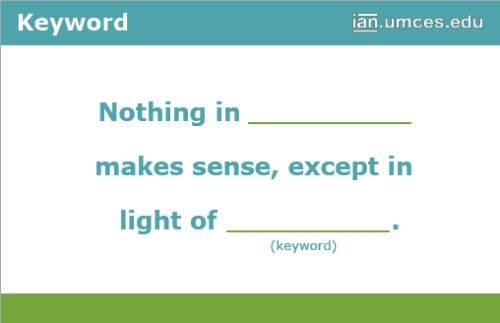
Examples include "Nothing in geology makes sense, except in light of plate tectonics" or "Nothing in ecology makes sense, except in light of evolution." Another way of elucidating key words is to ask people to highlight three words to explain a place, such as "Chesapeake Bay is __________ , ___________ , and ___________ ". An examples of an answer is beautiful, productive and shallow. Another way to elicit key words is to copy a passage of text into a wordle program in which the words used most frequently appear larger than less used words. The wordle programs automatically leave out prepositions, and allow you to manually delete words that are not relevant. The point of focusing on key words is that it provides a clear focus on the most important aspects of a science communication product. Distilling the message into key words provides an impetus to collect the photographs or other visuals to illustrate these attributes elucidated by key word selection.
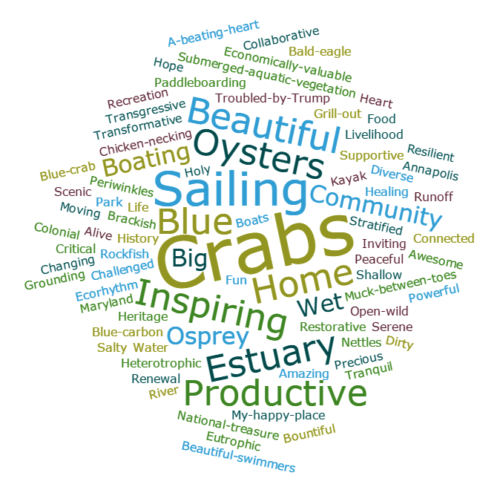
The ABT format (" . . . and . . . but . . . therefore . . ." template) provides compelling narrative structure.
The ABT format sets up an issue with the statements linked by 'and', in which tension is created using the 'but' statement, and is followed by the resolution using the 'therefore' statement. The ABT format guides the author into a strong narrative structure. A contrast to the ABT is AAA format (" . . . and . . . and . . . and . . .") in which repetitive statements or strings of facts become monotonous and boring. Another contrast is the DHY format (". . . despite . . . yet . . . however . . .") in which the reader is taken on a circuitous journey with no resolution; often resulting in a series of caveats. Randy Olson has developed the ABT concept and we have collaborated to analyze text using a Narrative Index to evaluate and compare narrative structure of different people in science, literature and politics. The Narrative Index analysis has shown that people using narrative structure are much more effective communicators than those who do not.
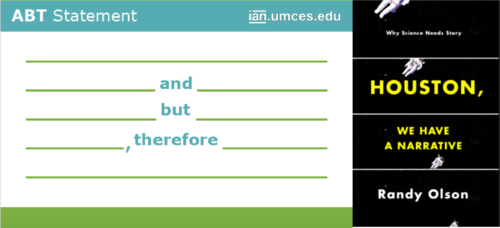
Active titles enhance comprehension.
The use of titles that are declarative statements provides the reader with the take home point up front. Active titles allow the reader to understand the intent of the supporting text or visual elements. Passive titles like 'Results' or 'Comparisons' only provide readers with the guideposts for the text, but active titles are more engaging. Active titles provide the first step in the communication adage of "Tell them what you are going to tell them", "Tell them", and then "Tell them what you told them". Comprehension is enhanced when repetition is used, and active titles accompanied by supporting text and images provide this repetition. Another aspect of active titles is similar to the selection of key words, discussed earlier, in which careful word selection provides a tight focus on the science communication messaging. Note the narrative literacy principles used in this blog are all active titles.

Science narratives should focus on informing, not persuading the audience.
The intent of narratives in science communication is important. The focus should be on providing basic understanding and knowledge to be used in decision making or for developing informed opinions. The use of science to persuade the audience becomes advocacy, rather than serving as an honest broker. Informing the audience gives them information which can be used to persuade them to think differently. Persuading the audience gets something from them and sells them something. While persuasion can inform the audience, it is a slanted viewpoint if the intent is simply persuasion.
Simplify and define terms, avoid jargon but do NOT 'dumb it down' -- instead, 'raise the bar'.
Many scientists perceive that what they do is so complicated that to explain it to non-scientists they have to 'dumb it down' to be understood. Many communications or media people also fall into this trap as well. But most of the time, the scientific questions being asked are fairly basic, and the answers can generally be cast as straightforward answers to these questions. In contrast, the techniques and approaches to address these questions are very complicated. Scientists have access to very sophisticated tools which can be difficult to explain. Therefore, focusing on the questions and answers, rather than the tools mad techniques can help with science communication. Avoiding acronyms and jargon is important to communicate behind a narrow peer group. It is important to define all terminology and simplify the language used in science communication. But scientists should not be afraid of communicating scientific concepts. It is best to consider a non-peer audience as intelligent but naive about the science being communicated. Talking down to the audience is likely to backfire. Consider science communication as a learning opportunity, not a lecture to poor students.
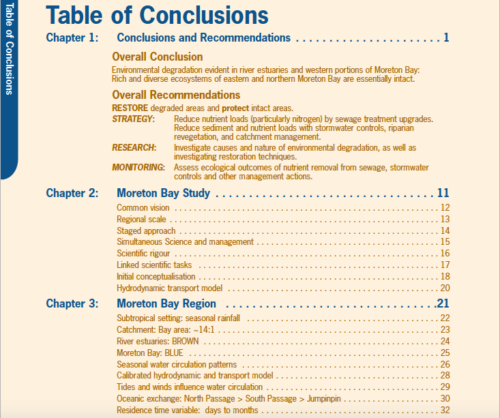
Provide context; 'why should the audience care?'.
The most important question to address is "so what?". The audience needs to care enough to try to understand what is being communicated. Thus, it is important to provide both the scientific context and the societal context of the science being communicated. This context setting should be covered early in the science communication, rather than waiting until near the end. Starting out with explaining 'why', and then following up with 'how' and 'what' allows the science communicator to engage with the audience early, create interest and the follow up with more explanation. Once the audience understands why you are using science to tackle a question or issue, they are far more likely to want to know more about how you are going about the research.
In addition to these practical narrative literacy principles, we use some rules of thumb in our science communication products. We generally aim for a 50% text and 50% visual balance. We think carefully about fonts and use sans serif font for posters and titles, and use serif font for large tracts of text. We highlight various key words or phrases using word clouds, font size, color, bold and italics. We pay particular attention to word choice of titles, the abstract, and the first and last sentences of text. We attempt to match the reading level to the intended audience, but always try to keep the language relatively simple, even if the concepts are complex.
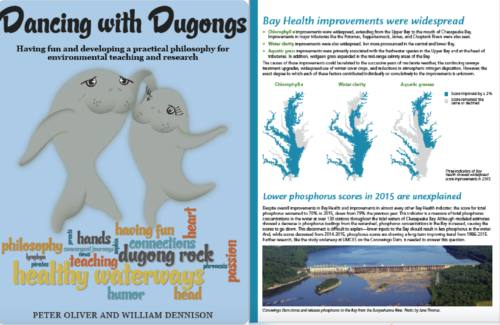
About the author
Bill Dennison

Dr. Bill Dennison is a Professor of Marine Science and Interim President at the University of Maryland Center for Environmental Science (UMCES).
Next Post > Leonardo da Vinci's scientific visualizations: 'Saper verdere' or knowing how to see
Comments
-
Atika 5 months ago
Thank you for sharing this great information with us, i really appreciate your post!